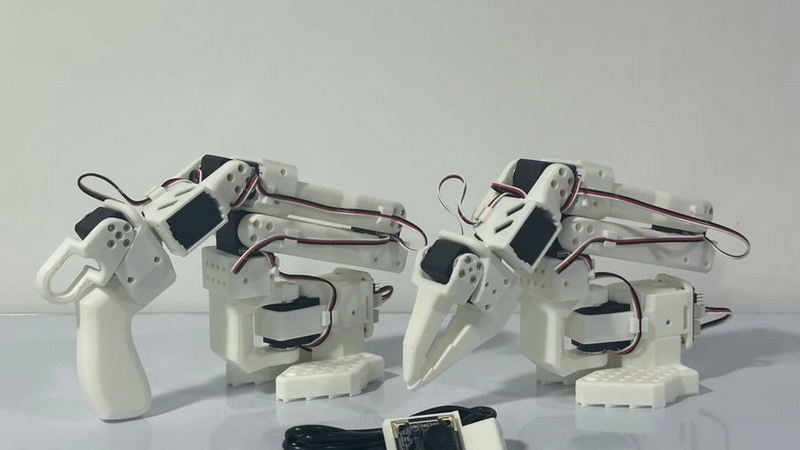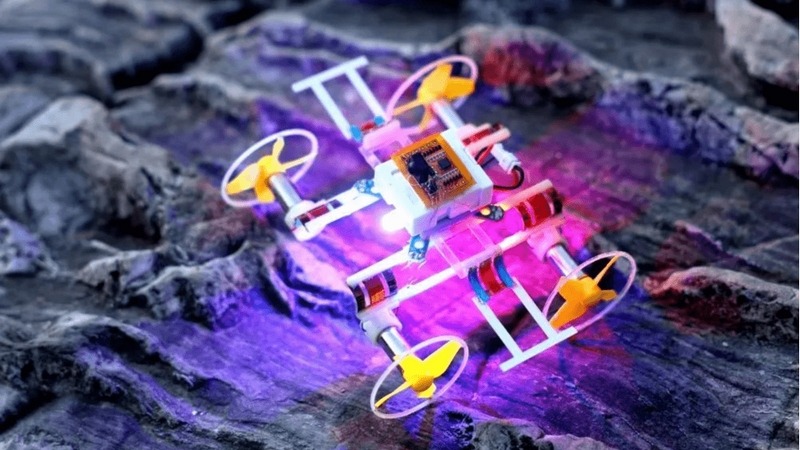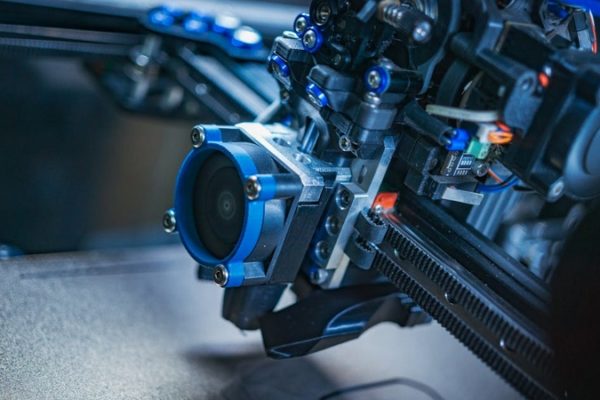
Hugging Face, renowned for its AI developer platform, has entered the robotics arena with a new offering: a programmable, 3D-printable robotic arm priced from $100. This innovation, the SO-101, builds on its predecessor, the SO-100, promising easier assembly and enhanced motor capabilities. What makes the SO-101 stand out in the world of affordable robotics? How does its AI-driven learning enhance its functionality? And as Hugging Face expands its robotics division, what role will it play in shaping the future of accessible robotics technology?
Top Stories This Week
- Hugging Face Releases A 3D-printed Robotic Arm Starting At $100
- Microsoft Researchers Say They’ve Developed A Hyper-Efficient AI Model That Can Run On CPUs
- Toyota Picks Huawei’s Android-killer HarmonyOS For Its Chinese Electric Sedan
- Stonepeak Unveils $1.5B Montera For AI Data Center Expansion
- Chinese Chipmakers Explore Open-Source Alternative To American IP
- Next-Gen AI Semiconductor Testing Equipment
- FastCGI Library Vulnerability Exposes Embedded Devices To Code Execution Attacks
- A Robot That You Ride Like A Horse
- Scientists ‘Tattoo’ Tardigrades In Nanotechnology Breakthrough
- Chinese Scientists Create A 9-cm Untethered Terrestrial-Aerial Microrobot Capable Of Transforming Into Various Desired Shapes
- Avocado OS: Open-source Linux Platform For Embedded Systems
Hardware Business News
Microsoft Researchers Say They’ve Developed A Hyper-Efficient AI Model That Can Run On CPUs

Microsoft has taken a significant step in AI innovation with the introduction of BitNet b1.58 2B4T, the largest 1-bit AI model designed to operate efficiently on lightweight hardware. What are BitNets, how does BitNet b1.58 2B4T outperform its competitors, and what does its release mean for the future of AI technology and hardware compatibility?
Toyota Picks Huawei’s Android-killer HarmonyOS For Its Chinese Electric Sedan

Toyota recently unveiled its new electric vehicle lineup in China, featuring the bZ7 sedan equipped with Huawei’s HarmonyOS. This strategic move highlights Toyota’s shift towards embracing local innovations, as HarmonyOS is designed to offer a seamless user experience across various devices. What led Toyota to choose HarmonyOS for its Chinese market debut? How does this decision reflect on the evolving relationship between global automotive brands and Chinese technology firms? And what implications could this have for the future of automotive technology in China and beyond?
Stonepeak Unveils $1.5B Montera For AI Data Center Expansion

Stonepeak is making a strategic entry into the AI infrastructure arena with the launch of Montera Infrastructure, a hyperscale data center platform in North America. This $1.5 billion investment aims to meet the surging demands of cloud computing and AI inferencing by strategically developing data centers in key metropolitan areas. What are the implications of Montera’s entry into the data center market? How will Stonepeak’s investment impact AI and cloud infrastructure? What does this mean for the future of digital infrastructure in North America and beyond?
Chinese Chipmakers Explore Open-Source Alternative To American IP

Chinese chipmakers are increasingly exploring the open-source RISC-V instruction set architecture as an alternative to American intellectual property. This shift is driven by the desire to reduce reliance on Western IP amid rising trade tensions. Chinese tech giants like Alibaba and Tencent are investing heavily in RISC-V, aiming to enhance technological sovereignty and self-sufficiency. What is the significance of RISC-V for Chinese tech firms, how might it reshape the global semiconductor landscape, and could this open-source architecture redefine the future of computing?
Hardware Engineering News
Next-Gen AI Semiconductor Testing Equipment

OKI Circuit Technology has made a significant leap in PCB technology, developing a 124-layer PCB for next-gen wafer inspection equipment used in high bandwidth memory for AI semiconductors. This advancement marks a 15% increase in layers over traditional designs, addressing the growing demands of AI processing for high-speed, high-density data transfer. What challenges do AI semiconductors present, how does this new PCB technology meet these demands, and how might this innovation shape the future of AI and semiconductor industries?
FastCGI Library Vulnerability Exposes Embedded Devices To Code Execution Attacks

A critical vulnerability in the FastCGI library, identified as CVE-2025-23016 with a CVSS score of 9.3, poses severe risks to embedded devices by enabling arbitrary code execution. Discovered by Baptiste Mayaud from Synacktiv, this flaw stems from an integer overflow in the ReadParams function, affecting versions 2.x through 2.4.4. What makes this FastCGI vulnerability so dangerous for embedded devices, how can attackers exploit this flaw, and what steps must be taken to safeguard future systems from similar threats?
A Robot That You Ride Like A Horse

Kawasaki has unveiled an intriguing concept: the Corleo, a robotic horse designed for unparalleled mobility across diverse terrains. This innovative machine promises to transcend the limitations of traditional vehicles, offering a glimpse into the future of transportation. What unique challenges does the Corleo face in achieving agility and balance while carrying a human rider? How do its design and technology compare to existing robotic solutions? And what could the future hold for legged robotics and their potential applications beyond the Corleo?
Hardware R&D News
Scientists ‘Tattoo’ Tardigrades In Nanotechnology Breakthrough

Tardigrades, known for their resilience in extreme conditions, have long fascinated scientists. Recently, researchers at China’s Westlake University have embarked on an intriguing experiment: tattooing these microscopic creatures. This process, involving electron beams and biocompatible compounds, not only tests the limits of tardigrade durability but also opens new avenues in cryopreservation and nanotechnology. What makes tattooing tardigrades significant, how does this process impact our understanding of extremophiles, and what future advancements might this technique inspire in fields like biosensing and living microrobotics?
Chinese Scientists Create A 9-cm Untethered Terrestrial-Aerial Microrobot Capable Of Transforming Into Various Desired Shapes

A research team from Tsinghua University has unveiled the world’s smallest and lightest untethered terrestrial-aerial microrobot, which can morph its shape to perform both on land and in the air. This innovation is powered by a groundbreaking thin-film-shaped actuator, enabling the robot to lock into various forms. What makes this microrobot a transformative leap in robotics? How do its capabilities expand the potential applications of robotics across different fields? As technology advances, what future possibilities could arise from such adaptable robotic designs?
Open-Source Hardware News
Avocado OS: Open-source Linux Platform For Embedded Systems

Peridio has unveiled Avocado OS, an open-source Linux distribution designed to streamline the development of complex embedded systems. By focusing on security, reliability, and performance, Avocado OS aims to bridge the gap between developer-friendly platforms and production-ready systems. How does Avocado OS transform the development of embedded systems? What features make it a game-changer for developers? And how might Avocado OS influence the future of embedded technology?


